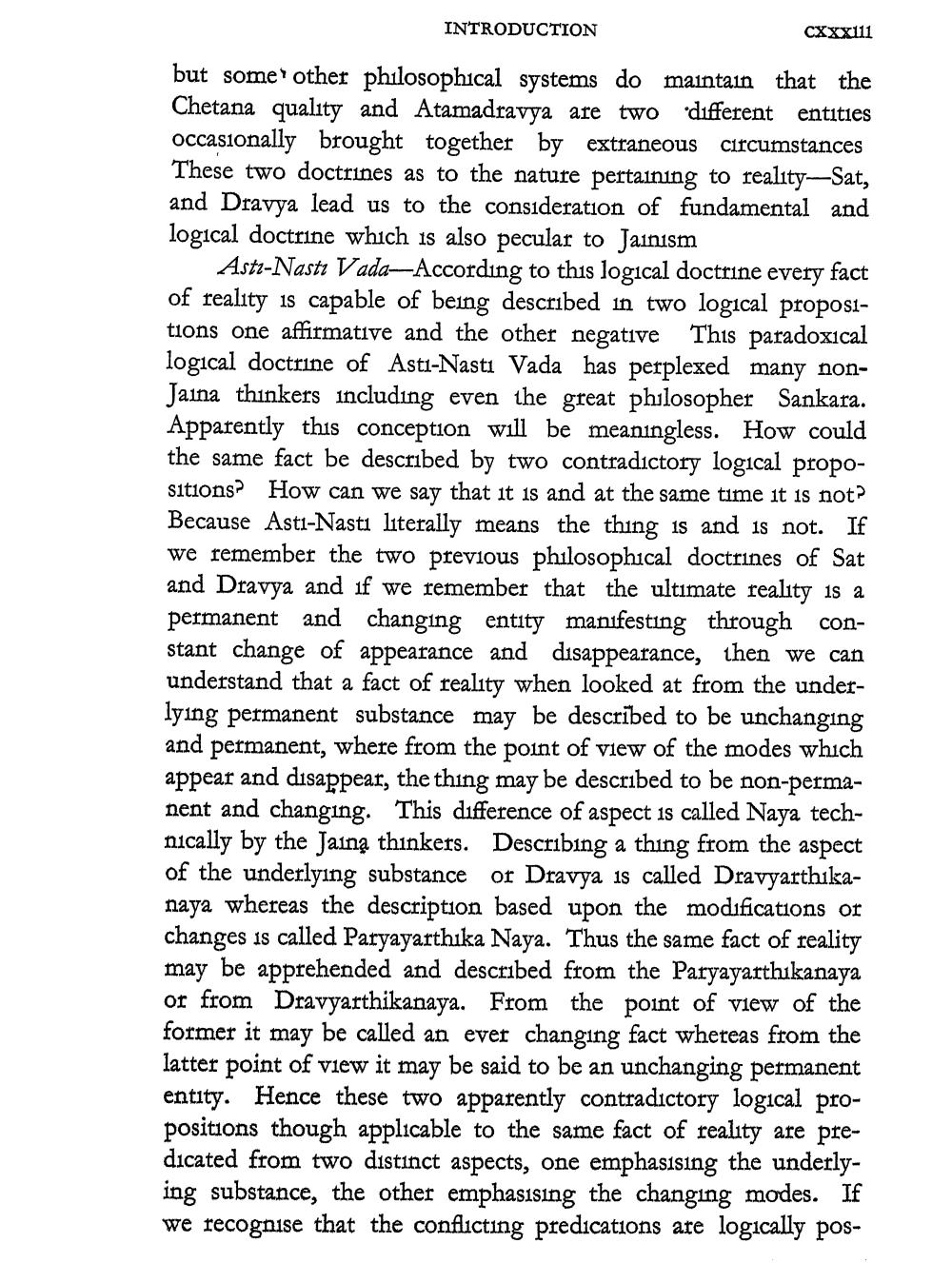________________
INTRODUCTION
CXXX111
but some other philosophical systems do maintain that the Chetana quality and Atamadravya are two different entities occasionally brought together by extraneous circumstances These two doctrines as to the nature pertaining to reality-Sat, and Dravya lead us to the consideration of fundamental and logical doctrine which is also pecular to Jainism
Asti-Nasti Vada-According to this logical doctrine every fact of reality is capable of being described in two logical propositions one affirmative and the other negative This paradoxical logical doctrine of Asti-Nasti Vada has perplexed many nonJaina thinkers including even the great philosopher Sankara. Apparently this conception will be meaningless. How could the same fact be described by two contradictory logical propositions? How can we say that it is and at the same time it is not? Because Asti-Nasti literally means the thing is and is not. If we remember the two previous philosophical doctrines of Sat and Dravya and if we remember that the ultimate reality is a permanent and changing entity manifesting through constant change of appearance and disappearance, then we can understand that a fact of reality when looked at from the underlying permanent substance may be described to be unchanging and permanent, where from the point of view of the modes which appear and disappear, the thing may be described to be non-permanent and changing. This difference of aspect is called Naya technically by the Jaina thinkers. Describing a thing from the aspect of the underlying substance or Dravya is called Dravyarthikanaya whereas the description based upon the modifications or changes is called Paryayarthika Naya. Thus the same fact of reality may be apprehended and described from the Paryayarthikanaya or from Dravyarthikanaya. From the point of view of the former it may be called an ever changing fact whereas from the latter point of view it may be said to be an unchanging permanent entity. Hence these two apparently contradictory logical propositions though applicable to the same fact of reality are predicated from two distinct aspects, one emphasising the underlying substance, the other emphasising the changing modes. If we recognise that the conflicting predications are logically pos




